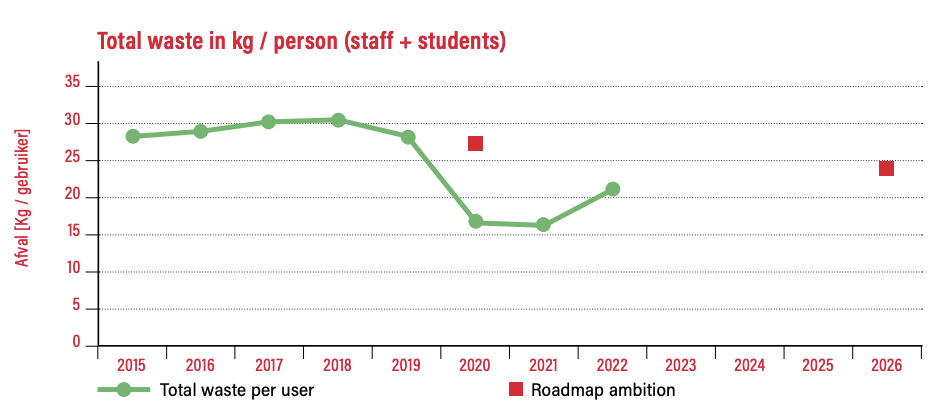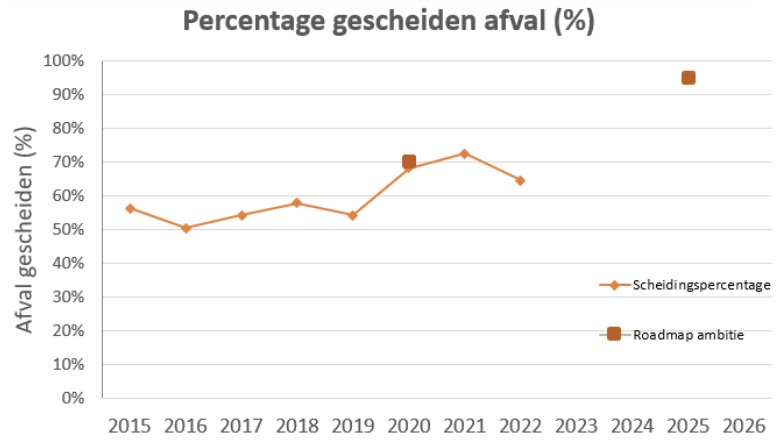Waste
At the UG, all our GFT and paper waste is weighed at building level by the collector. Plastic and residual waste is weighed through compactors and we obtain the figures from the waste processor.
In 2019, the RUG's waste policy was revised. From the end of March 2021, the RUG will separate waste at source. This means that not only is post-separation used, but the RUG environment is also set up for waste separation by students and employees. Waste islands are used for this purpose.
Residual waste is further separated into the raw material flows: coffee cups, paper, PMD, organic waste and a small residual waste fraction. PMD and residual waste are post-separated at the same waste processor. The amount of non-hazardous waste decreased by about 30% compared to previous years. The graph shows the amount of waste in kg per employee + student.

New developments
The Facilities Organisation is working hard on a new European tender for waste management. For this, it is collaborating with the Green Office and Arbo Environmental Service. The targets for 2025 included in the RUG's new waste policy are: 95% waste separation by 2025 and 15% reduction in the total amount of waste compared to 2020. This also means that we aim to make all non-hazardous waste circular by 2025. The RUG has a specific policy on hazardous waste.

Non-hazardous waste will be re-tendered in 2025. The Schedule of Requirements will include the sustainable processing of waste and a goal of fossil-free waste collection from 2023. From 2025, only emission-free logistics will be allowed in Groningen city centre and for all RUG sites. This is in line with Groningen municipality's mobility policy, which requires zero emission logistics in the city centre from 2025.
Ambitions Sustainability Roadmap
➔ By the end of 2026, 95% of the total waste (hazardous and non-hazardous) will be
separated
➔ 15% reduction of the total waste in 2026 compared to 2019 (from 29 kg to 25 kg per
staff member/student)
➔ All residual waste circular by 2026
Example sustainable waste policy | Compactors
An example of a sustainable solution in the field of waste are the 'compactors' on the Zernike campus. These solar-powered waste compaction containers provide one hundred percent for their own energy needs. They compress the waste and can thus contain up to five times more waste than a normal waste bin. The increased capacity reduces the number of times the bin has to be emptied. This contributes to a reduction in CO2 emissions.
